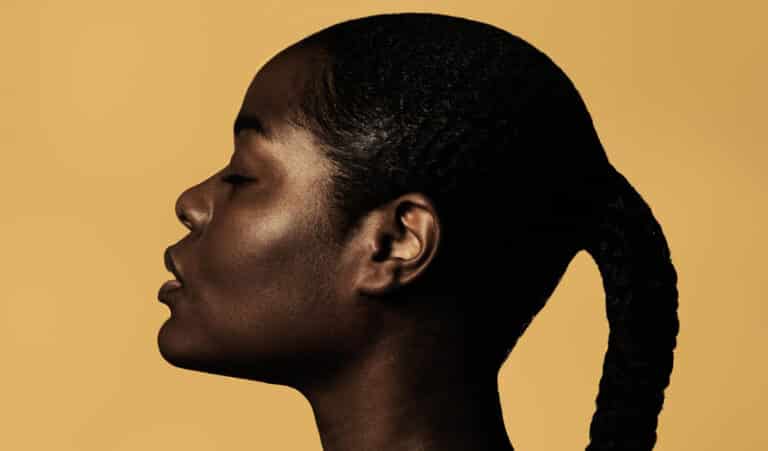Is carrot oil really the secret ingredient to hair growth?
Carrots, the vegetable that goes with everything—soup, roast dinner, curry, you name it. But what if we told you that they might have another benefit most of us have been sleeping on? You heard it here first, we’re talking about the part the orange root plays in increasing hair growth. Here’s why you might want to start adding carrot oil to your hair care routine as it could be the key to all your hair problems.
Aside from the timeless saying that eating carrots will help improve your eyesight—something that, although true to a certain degree, I took way too seriously during my teens—they are also known to improve overall eye health as well as helping lower cholesterol.
One of their other big benefits however, is that they are the necessary ingredient in carrot oil, duh. This specific type of oil is known to help strengthen and moisturise hair follicles, in turn aiding hair growth.
You know what they say, ‘health is wealth’, and this goldmine of orange goodness might be the perfect puzzle piece to kickstarting your hair health journey.
What even is carrot oil?
Carrot oil is an essential oil—concentrated plant extracts—whose primary characteristics are to provide nutrients and protect. It is made by crushing up the roots and seeds of carrots (yes, they have seeds) and placing them within what is known as a carrier oil, which is used to dilute other types of oils, making it easier for them to be absorbed by your skin or hair.
Can carrot oil be used for hair?
Speaking to trichologists—hair health experts—Byrdie writer Rachel Dube went over the many uses and benefits of carrot oil. In places like Africa, West Asia, and Europe, the oil is mostly used for food or medicinal purposes. But these same benefits are actually what makes it all the more coveted for hair growth. “It has biological properties that are antimicrobial and hypotensive, all of which are great for the scalp,” certified trichologist and founder of Root Cause Scalp Analysis, Bridgette Hill, told Dube.
Furthermore, there are currently no known ingredients that carrot oil interferes with. This means that it can be paired with pretty much anything, and works very well with coconut oil, another ingredient already renowned for its moisturising and sealing attributes.
What are the benefits of carrot oil?
@rikasays ♬ Oh No - Kreepa
With the help of carrot oil, you may be able to say bye-bye to dandruff, since it is also known to kick bacteria’s butt. The oil can easily eliminate them, which maintains your hair’s health and strength. The other reason it’s so great for the scalp is because of its regenerative qualities. By boosting blood circulation, carrot oil can help seal the hair cuticle and strengthen hair fibres.
Carrot oil’s other pros include stimulating hair follicles and preventing those pesky split ends from ruining your hair growth process as well as maintaining the moisture balance within your hair, giving it that oh-so-yummy goodness it needs to thrive.
Dube also spoke to Bosley MD-certified trichologist Gretchen Friese, who further explained, “Its vitamins (A, B, C, and E, as well as phosphorus and magnesium) may have a protective effect from outdoor damage, like UV rays and environmental pollution, too.”
How do you apply carrot oil to your hair?
Incorporating carrot oil into your hair routine is simple, but you must do so according to the outcome you want. What’s great about the oil is that it’s so versatile, you can find it in a lot of products, from its original oil form to an additive in creams, conditioners, and hair masks for extra moisture, all of which can be raked through your hair as part of your normal routine. If it’s hair growth you’re mostly looking to achieve, then your best bet is a direct application to the scalp for stimulation. It’s advised that you only use it once or twice a week though.
There’s also the DIY route of making carrot oil yourself. You can make your own concoction to your liking by diluting three to four drops of the essential oil in your favourite carrier oil of choice.
Is carrot oil too good to be true?
As with anything, no two people are the same and there are some considerations that need to be taken into account when thinking of using something like carrot oil. Caution should be taken as it can discolour the skin of those with sensitive scalps and people dealing with chronic medical scalp conditions. In fact, caution is advised when using any herbal product as there are still many unanswered questions regarding most of those.
Last but not least, and although it might seem obvious to some of you, anyone who has an allergy to carrots should not use carrot oil. “To make sure you aren’t allergic, do a patch test,” Friese advised.
All in all, as long as you take precautions and don’t go overboard, it looks like carrot oil could be the next best ingredient to revive your mane after a long year of messy buns, cancelled hairdresser appointments and DIY attempts at wolf cuts or bubble braids.





